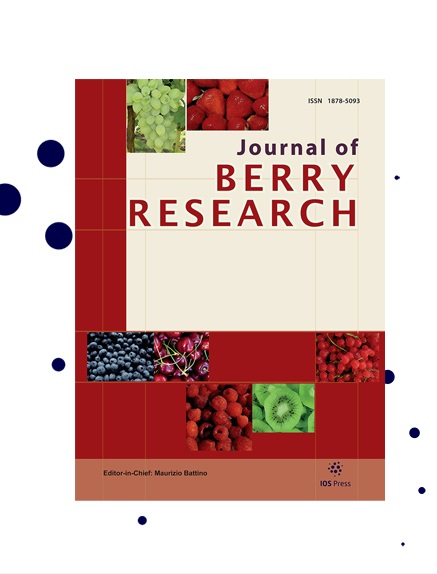Extraction optimization and microencapsulation of Berberine from Berberis vulgaris incorporated in a functional orange drink: Physiochemical attributes and kinetic release studies
IF 1.4
4区 农林科学
Q3 PLANT SCIENCES
引用次数: 2
Abstract
BACKGROUND: Berberine, extracted from Berberis vulgaris, is one of the well-known natural antioxidant sources. OBJECTIVE: Optimizing the berberine extraction conditions from the whole Barberry plant and microencapsulation of the optimized extract to be used as a bioactive ingredient in functional orange juice. METHODS: Seventeen extraction processes were designed to determine an optimized method for producing an ethanol/water extract with maximum yield, safety, and antioxidant properties. The optimal extract was microencapsulated by complex coacervation using tragacanth/gelatin and then spray-dried. The selected microcapsules based on morphology, particle size, and solubility were added to orange juice, and the physical and sensory properties of the functional drink, as well as the kinetic release models, were analyzed. RESULTS: An optimal extract with 82%antioxidant activity was prepared using a 75%ethanol/water ratio and an extraction time of 0.5 h at 22.3°C. Spherical-shaped microcapsules could create a desirable cloudy appearance with good stability in the pH of orange juice. The kinetics of the berberine release revealed an initial burst phase followed by a prolonged one, which would appeal to consumers’ sensory perceptions. CONCLUSIONS: The excellent compatibility between berberine and orange juice provides a potential capacity to fortify a high-consumption drink with a phytonutrient presented in a berry fruit.功能性橙饮料中小檗碱的提取优化及微胶囊化:理化性质及动力学释放研究
背景:小檗碱是从小檗中提取的天然抗氧化剂之一。目的:优化全株小檗碱的提取工艺,并将提取的小檗碱微胶囊化,作为功能性橙汁的生物活性成分。方法:设计了17种提取工艺,以确定一种收率最高、安全性高、抗氧化性好的乙醇/水提取物的最佳提取方法。将最佳提取液用黄芪/明胶复合凝聚微胶囊化,喷雾干燥。将根据形貌、粒径和溶解度选择的微胶囊添加到橙汁中,分析功能饮料的物理和感官特性,并分析其动力学释放模型。结果:以75%的乙醇/水比,22.3℃,提取时间0.5 h,制备出抗氧化活性为82%的最佳提取物。球形微胶囊可以在橙汁的pH值中产生理想的浑浊外观,并具有良好的稳定性。小檗碱释放的动力学揭示了一个最初的爆发阶段,随后是一个延长的阶段,这将吸引消费者的感官知觉。结论:小檗碱和橙汁之间的良好相容性提供了潜在的能力,以强化高消耗饮料与浆果果实中的植物营养素。
本文章由计算机程序翻译,如有差异,请以英文原文为准。
求助全文
约1分钟内获得全文
求助全文
来源期刊

Journal of Berry Research
Biochemistry, Genetics and Molecular Biology-Biochemistry
CiteScore
3.50
自引率
11.80%
发文量
21
期刊介绍:
The main objective of the Journal of Berry Research is to improve the knowledge about quality and production of berries to benefit health of the consumers and maintain profitable production using sustainable systems. The objective will be achieved by focusing on four main areas of research and development:
From genetics to variety evaluation
Nursery production systems and plant quality control
Plant physiology, biochemistry and molecular biology, as well as cultural management
Health for the consumer: components and factors affecting berries'' nutritional value
Specifically, the journal will cover berries (strawberry, raspberry, blackberry, blueberry, cranberry currants, etc.), as well as grapes and small soft fruit in general (e.g., kiwi fruit). It will publish research results covering all areas of plant breeding, including plant genetics, genomics, functional genomics, proteomics and metabolomics, plant physiology, plant pathology and plant development, as well as results dealing with the chemistry and biochemistry of bioactive compounds contained in such fruits and their possible role in human health. Contributions detailing possible pharmacological, medical or therapeutic use or dietary significance will be welcomed in addition to studies regarding biosafety issues of genetically modified plants.
 求助内容:
求助内容: 应助结果提醒方式:
应助结果提醒方式:


